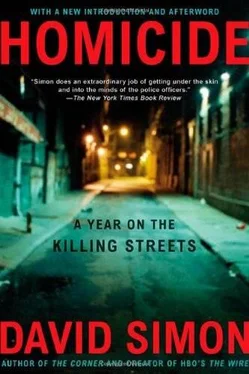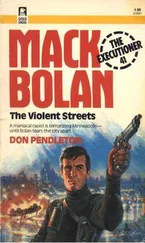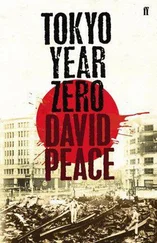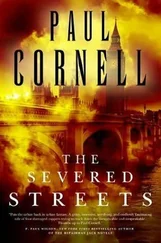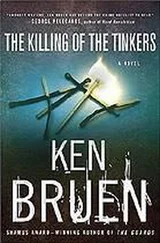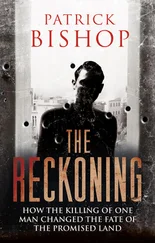“Those,” said Smialek, turning to the residents with proof of a police detective’s fallibility, “are exit wounds.”
Garvey watched the Big Man go into a slow boil. It was, after all, Smialek’s job to know any and all entrances from any and all exits, whereas it was Worden’s to find out who put the holes there in the first place. Given the divergence in perspectives, several months and a dozen or so bodies are often required before a detective and a pathologist can work well together. After that initial encounter, for example, it took quite a while before Worden could see Smialek as a good cutter and investigator. Likewise, it took that long before the doctor began to regard Worden as something more than a poor dumb white boy from Hampden.
Because a medical examiner’s report is required on any case in which murder is probable, the autopsy room has long been part of a Baltimore detective’s daily routine. On any given day, the morning rounds may bring to Penn Street a state trooper handling a Western Maryland drowning or a Prince George’s County detective with a drug murder from the D.C. suburbs. But the sheer volume of city violence has established the Baltimore cops as fixtures at the ME’s office, and as a result, the relationship between veteran detectives and the more experienced pathologists has grown close with time. Too close, to Smialek’s way of thinking.
Smialek arrived in Baltimore with the belief that the natural ties to the homicide unit had allowed the medical examiner’s office to sacrifice some of its status as an independent agency. Detectives, particularly those from the city, had too much influence over the manner-of-death rulings, too much say in whether something would be called a murder or a natural death.
Before Smialek’s arrival, the autopsy room was indeed a less formal place. Coffee and cigarettes were bartered and shared in the cutting room and a few detectives had been known to show up on Saturday mornings with a six-pack or two, treating the cutters to some early relief from the weekend rush that always began with Friday night’s violence. Those were the days when practical jokes and raw banter were an established part of morning rounds. Donald Steinhice, a detective on Stanton’s shift who long ago had learned to throw his voice, was responsible for some notable feats, and many an ME or assistant began an autopsy by pausing for what seemed to be a dead man’s complaint about cold hands.
Nonetheless, the casual ease of these years also had a down side. Worden, for one, could remember visiting the autopsy room and noticing the clutter and disorganization; sometimes, when the weekend rush used up all the metal gurneys, bodies were even laid out on the floor. Nor was it uncommon for evidence to get lost, and the integrity of trace evidence was often suspect, with the detectives unsure whether hairs and fibers found on the bodies were from the crime scene or from the ME’s own freezer. Most important, to Worden’s way of thinking, there had simply been a lot less respect for the dead.
In a campaign for investigative independence and better conditions, Smialek ended all that, although he did so in a way that damaged the camaraderie of Penn Street and made the place a hell of a lot less fun in the process. As if to emphasize the professionalism of the office, he insisted on being addressed as a doctor and would not tolerate even a passing reference to his office as a “morgue.” To avoid acrimony, detectives learned to call the place-in Smialek’s presence, at least-the Office of the Chief Medical Examiner. Subordinates who were used to less formal arrangements, many of them talented pathologists, soon ran afoul of the new chief, as did those detectives who couldn’t sense the change in the weather.
Walking into the autopsy room on one occasion, Donald Waltemeyer made the mistake of wishing all the ghouls in the chopshop a fine good morning. Whereupon Smialek told other detectives that if Waltemeyer continued on that path, he would do so with a new and larger asshole. They were not ghouls, he declared, they were doctors; it was not a chopshop, it was the Office of the Chief Medical Examiner. And the sooner Waltemeyer learned these things, the happier a warrior he’d be. Ultimately, the detectives’ verdict on the Smialek regime was divided: the ME’s office certainly seemed to be better organized and more professional in some respects; on the other hand, it was a fine morning when you could share a cold one with Dr. Smyth while listening to Steinhice speak for the dead.
Of course, the application of criteria such as comfort and amusement to the autopsy room is-in and of itself-ample proof of a homicide man’s peculiar and sustaining psychology. But for the detectives, the most appalling visions have always demanded the greatest detachment, and Penn Street, even on a good day, was one hell of a vision. In fact, quite a few detectives came close to being ill the first couple times around, and two or three aren’t ashamed to say they still have a problem every now and then. Kincaid can handle anything unless it’s a decomp, in which case he’s the first one out the loading dock door. Bowman’s okay until they pop the skull to remove the brain; the sight doesn’t bother him so much as the clipped sound of the snapping bone. Rick James still gets a little unnerved when he sees a young child or an infant on the table.
But beyond those occasional hard moments, the daily routine at the ME’s office is, for a detective, exactly that. Any investigator with more than a year in the unit has witnessed the postmortem examination so often that it has become utterly familiar. If they absolutely had to do it, half the men on the shift could probably pick up a scalpel and break a corpse down to parts, even if they didn’t have any idea what, if anything, they were actually looking for.
The process begins with the external examination of the body, as important as the autopsy itself. Ideally, the cadavers are supposed to arrive at Penn Street in the same condition as they appeared on the scene. If the victim was dressed when found, he remains dressed, and the clothes themselves will be examined with great care. If there were indications of a struggle, the victim’s hands will have been encased at the scene in paper bags (plastic bags produce condensation when the body is later removed from the freezer) to preserve any hairs, fibers, blood or skin beneath the fingernails or between the fingers. Likewise, if the crime scene was in a house or some other location where trace evidence could be recovered, the ME’s attendants will wrap the body in a clean white sheet before removal, trapping any hairs, fibers or other trace material for later recovery.
At the beginning of the external examination, each body is removed from the walk-in freezer and weighed, then rolled on a metal gurney to the overhead camera that provides the photographs of record before the autopsy. Next, the body is rolled into the autopsy area, a long expanse of ceramic tile and metal that can accommodate as many as six examinations simultaneously. The Baltimore facility does not have, like many autopsy rooms, overhead microphones that allow the pathologists to record findings for later transcription. Instead, the doctors take notes periodically using clipboards and ball-points left on a nearby shelf.
If the victim was clothed, the pathologist will try to match the holes and tears in each item of clothing to the corresponding wounds: Not only does this help confirm that the victim was killed in the presumed manner-a good pathologist can spot a body that has been dressed after being shot or stabbed-but in the case of gunshot wounds, the clothes can then be checked visually or chemically tested for ballistic residue.
Once the victim’s clothes have received a preliminary examination, each article is then removed carefully to preserve any trace evidence. As with a crime scene, precision is preferable to speed. Bullets and bullet fragments, for example, often manage to leave the body only to lodge in the victim’s clothing, and often that evidence will be recovered as the body is slowly undressed.
Читать дальше
